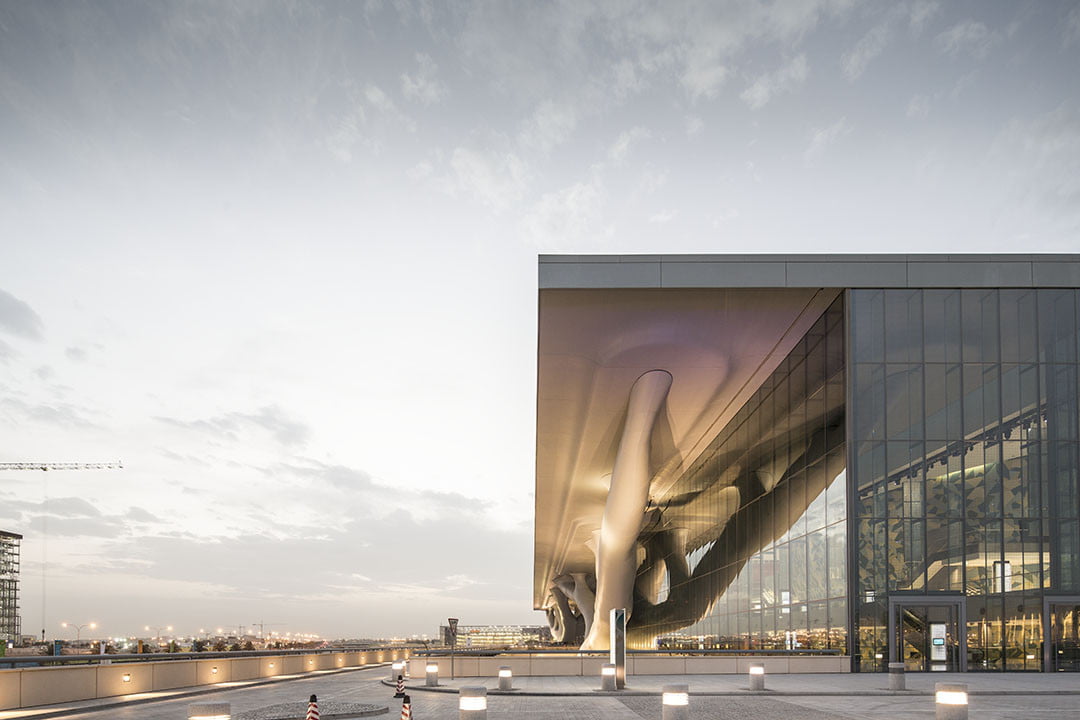The Igualada cemetery near Barcelona built by Enric Miralles and Carme Pinos between 1985 and 1995. Cemetery derived from the Greek word “koimetêrion”, dormitory.
In southern Europe two traditions coexist, either the coffin is placed in the ground and covered with a marble or stone slab, or, imitating the catacombs of the early Christians, the coffin is placed in a niche.
Igualada has forty thousand inhabitants and in the heart of the town there is a cemetery where the rows of niches are increasingly dense and high.
At the beginning of the 1980s the cemetery was full, and in 1985 the municipality decided to build a new facility on the only land still available far from the centre, behind the future 2000-hectare industrial estate, which is still undeveloped.
The programme is more complex than it seems – the cemetery is to be a place for walking, a park, there will be 1,600 niches, some 40 graves and vaults, a mass grave, a chapel and a morgue.
The winners of the competition are Enric Miralles and Carme Pinos, a couple of Catalan architects, 30 years old, who admire Gaudi, Le Corbusier and the Land Art of Richard Long.
In its presentation, the plan they submitted resembled no other, contrary to the usual, the curves of the land, the future vegetation, the plans of the buildings are drawn with a line of the same thickness, difficult to read they announce the true nature of the project “we think that our organic body must return to the earth they wanted to force us to put the body in a box and we thought that the body must return to nature, you are dust, you will be dust, instead of burying the bodies we had the idea of burying the niches these concrete boxes we buried the cemetery.
The cemetery is a notch dug in the ground, on the edges of the trench the alignments of niches are piled up on five levels, at their top a visor draws volutes and sharp angles retaining the earth and the vegetation these concrete lines mark the border between nature and the built.
The architects have created a 150 metre long incision 5 metres deep, ending in a secular square, with niches lined up on both sides.
Whoever walks between the concrete facades does not perceive anything of the landscape, the alley is planted with trees, in which the tops protrude.
The entrance to the alley is marked by three high rusty metal crosses mounted on wheels, a symbolic door, a tangle of tubing that was supposed to open and close to prevent cars from entering, but never did.
The alley slopes gently downwards between the two alignments of niches facing each other, from which the oblique facades lean on one side towards the alley and on the other towards the back, the two facades have the same angle, they are inclined and parallel.

Volumes covered with earth and which, at the back, hold the ground halfway down the alley, an event juxtaposing in the same alignment the two reverse inclinations, the architects open up the space, the light penetrates more easily, placed on recessed plinths that make up for the unevenness of the slope, the alignments of niches seem to float horizontally, at the bottom of the slope the alley opens onto a circus surrounded on two levels by gabions, accumulations of stones in concrete iron.
In the walls, the architects have opened a dozen family vaults, concrete cellars that can accommodate several coffins and the doors are made of rusty metal panels, placed on the ground, concrete slabs await the lids of twenty or so empty graves, here since the opening of the cemetery no one has wanted to be buried.
The architects had won the competition with a play on words by naming their projects “zementiri”, zementiri with a Z they had designed a cemetery where three alleys followed one another to form a Z, a walkway which was to join the pathway by the river, the budget constraints obliged them to cut two segments of the Z, As a direct consequence, where the second segment of the Z should have branched off, the niche alignment was abruptly interrupted and continued by a Hebrew slope. To compensate for the reduction in the number of niches initially planned, a third niche alignment was built one level above.
From the period of the building site there remain photomontages made by Enric Mirallès, eager for new experiences, he recomposes the photos of the still unoccupied cemetery, a bare concrete structure, the 790 niches all have the same dimensions, 70 centimetres high, 80 centimetres wide, 3 metres deep, the bare minimum for a coffin, all are built in the same way from prefabricated concrete slabs, with a last slab sealed vertically to close the niche.
The niches come in groups of 30 and are designed to promote the decomposition of the body and respect strict sanitary conditions. At the front, a hermetic seal prevents it from being opened for 2 years, at the bottom of each niche, slightly inclined towards the back, a hole allows the evacuation of fluids, and a thin opening allows air to circulate.
Impossible to guess behind the oblique façade the stacking of concrete niches and their successive withdrawals which would have created a staircase effect, if the volume of each niche is simple, a parallelepiped, the volume designed on the façade and which accommodates the funerary plaque concentrates all the efforts of the architects, they seek to vary the effects of light to break the monotony of the whole, the four trays are not cemented, they seem to be juxtaposed in an ephemeral arrangement, a fragility in front of the passing time, the opposite of the eternity

